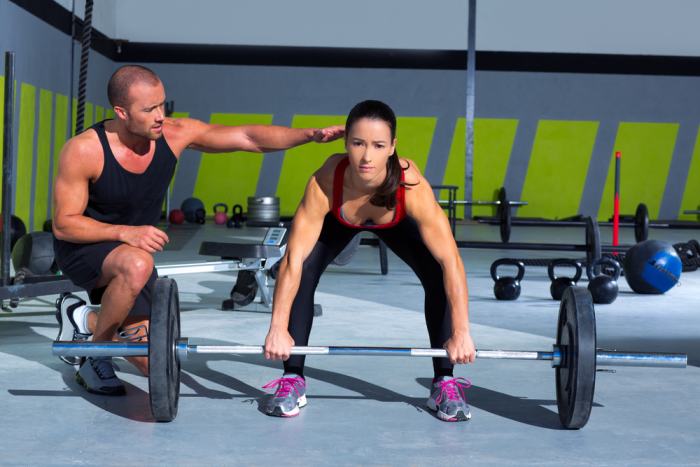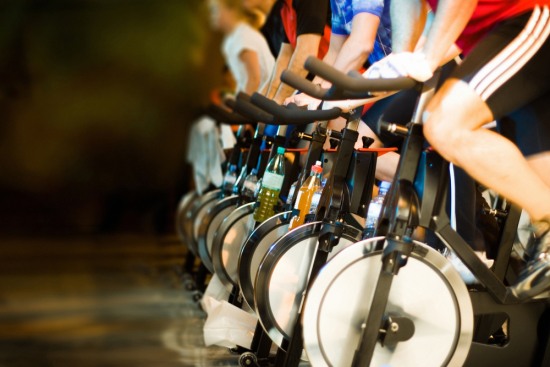Deadlift Technique – Increase your strength and prevent injury
[two_fifth][ads1][ads1][ads1][/two_fifth][three_fifth_last]The most important part of any lift is your technique, which is particularly important with deadlifts. If your deadlift technique is wrong and you continue to lift the weight there are several major problems that can happen.
This can include more minor issues such as not lifting your full one rep max due to poor form, but can also include much more serious problems such as hamstrings tears and torn biceps that can put you out of training for months.[/three_fifth_last]
While this article is by no means designed to put you off the deadlift, I hope to outline the best practices for using on every lift to ensure you stay injury free and keep making progressive strength gains.
The following article is based on the standard version of the deadlift. We will take a look at variations such as ‘Sumo’, ‘Stiff Legged’ and ‘Romanian’ in future articles.
[divider]
Why deadlift?
There are many reasons for people including deadlifts in their workout routine. Whether it’s because they enjoy lifting more weight than in any other exercise, the real world benefits of having a strong back or even just for increasing their upper and lower body strength and muscle mass, there is no denying the deadlift is a very effective exercise.
Unlike the cable pulldown machines that are limited by the weight in the weight stack, or dumbbells which eventually have their weight limits, with deadlifts you can keep adding weight until you run out of room on the bar.

You can be sure that gyms will have a barbell and wide selection of weight plates and it doesn’t cost the earth to buy this simple weightlifting equipment for your home gym. So it’s also how readily available the equipment required is.
The simplicity of the exercise is another reason why the deadlift is so popular. Pulling a heavy weight off the floor requires none of the complexity of a well performed squat and is the only exercise out of the big 3 (deadlifts, bench press and squat) that doesn’t require a spotter to push your strength limits, actually making it a much safer exercise.
[divider]
Muscles groups worked by the deadlift
[checklist]
[/checklist]
[divider]
[box type=”shadow” align=”aligncenter” width=”400″ ]
How to deadlift
Although the basic movement of the deadlift is very simple, as there are often such heavy weights involved it’s important to make sure you follow the correct steps when preparing for and performing the lift.
Although over time you may develop a slightly different deadlift technique to suit your physiology, the following is a good reference point.
1. Stand with your feet shoulder width apart and position the barbell so the bar is just above your feet.
2. Grip the barbell so your inner forearms touch the outside of your thighs.
3. Lean your knees forwards slightly until your shins lightly touch the bar.
4. Take a grip of the bar with whichever grip position you prefer. While double overhand is used, having one overhand grip and one underhand is preferred due to its increased grip strength.
5. Keep your spine in a neutral position and look straight ahead.
6. Hold your shoulders back and keep them positioned over the bar, with your chest up.
7. Tighten your shoulders and glutes and get a strong grip of the bar.
8. Take a deep breath, hold it and begin to lift.
9. It’s almost unavoidable to initially press with the balls of your feet, but as soon as the bar starts moving up try to shift the driving pressure back onto your heels.
10. Once the bar is approaching your knees slowly start exhaling and bringing your hips forward to get past the ‘sticking point’.
11. At the top of the movement, contract your glutes to bring your hips into the correct position and don’t hyper extend by leaning back with the weight.
[/box]
[divider]
3 common deadlift technique mistakes and their solutions
1. Bringing your hips up too early
The hardest part of most lifts is the midpoint, the switchover where you change from controlling the lowering of the weight to attempting to push the weight back up again against gravity. This is actually the reverse with deadlifts, where you are starting at the hardest point of the lift which is getting the weight moving off the floor.
With the most energy being needed just to get the weight plates clear of the floor, this can often result in your hips coming up too quickly. If your hips are already full up by the time you take the strain then this is far too early. This creates a rounded shape in your back as you are now fighting just to get your back in a flat position again.
Solution: Focus on keeping your hips back while you take the full strain of the weight. Maintain a straight back as you start to pull and don’t bring your hips forward until the weight is clear of the floor. There should never be a great deal of up or down movement in your hips throughout the movement.
2. Too much trying to use the quad muscles
The deadlift has always been one of the most effective back building exercises available and can even be considered one of the best exercises for targetting a wide range of muscle groups.
But many people make the mistake of trying to bring their quads into the exercise by sinking their hips too low and trying to keep their quads parallel with the ground as they start the lift. If you try to do this then you will take a lot of the back muscles out of the initial lifting phase and put too much pressure on your arms and shoulders.
Solution: Similar to the solution for problem 1, keep your hips just above your knees even in the starting position. This will put more of your back over the bar and spread the weight more evenly across a wider range of muscles. You should be focussing on moving your hips forward as the bar passes your knees.

3. Incorrect weight distribution through the feet
You may have heard of the ‘stiff legged’ variation of deadlifts that places more focus on building up your hamstrings. Your hamstring, glute and hip strength is all equally as important as back strength.
Because the weight is loaded in front of you it’s easy to lean forward slightly on the lift and place more strength on driving the pressure through your toes.
Solution: When you start to lift the weight clear of the floor, even though the weight is all loaded at the front of your body you need to drive through your heels.
If you do this then it helps to engage more of these important stabilising muscles such as the hamstrings and glutes, compared to more quad involvement if you press through your toes.
[divider]
Foot positioning and footwear choice
Foot positioning is one of the most important aspects of a successful deadlift technique. If you don’t have your feet in the best position then you won’t be able to lift anywhere near as much weight as with a solid foot position.
The role of the feet is to press down against the ground with the weight transferred as soon as possible onto the heels. This brings in more of the hamstrings and glutes while keeping the bar closer to your body. While positioning your feet shoulder width apart is recommended, whether you keep your toes pointing straight forward or keep them slightly out turned is down to personal preference.

Out turned toes will help to load the weight onto your heels quicker as well as being able to bring the bar closer to you at the start. If you find you are pressing through the balls of your feet too much and can’t get the weight to push through your heels then try out turning your toes about 30 degrees.
Footwear is particularly important for good deadlift technique. Many people will even go barefoot to limit the range the weight needs to move through but this isn’t recommended. A pair of deadlift shoes with a very thin, flat sole is best for more even weight distribution. General running trainers will often have very thick heels that make it harder to transfer the weight onto your heels.
[divider]







